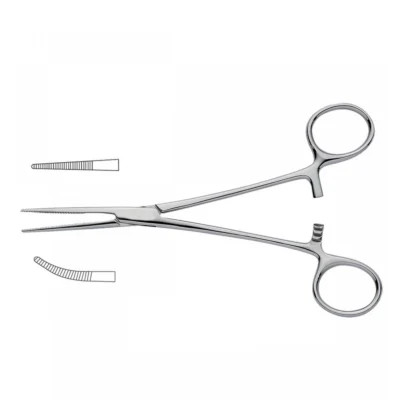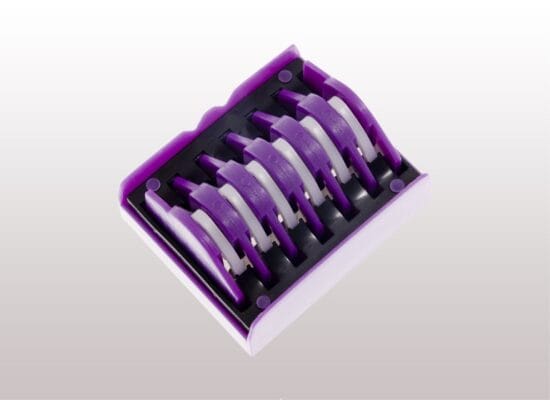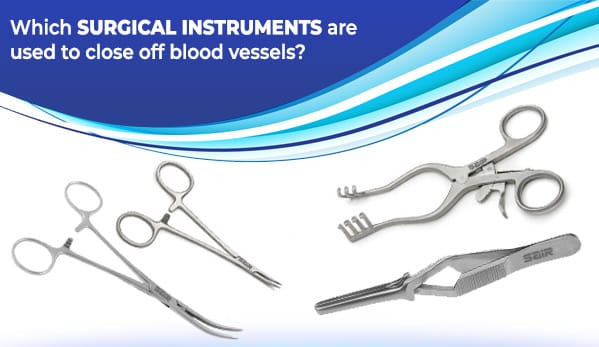In the fast-paced world of surgery, controlling blood loss is a critical skill that can save lives. One of the key steps in many procedures is the need to close off blood vessels, whether to prevent excessive bleeding or to redirect blood flow to certain areas. Surgeons rely on a variety of specialized instruments for this purpose, each designed for precise control and efficiency. In this blog, we’ll explore the most commonly used surgical instruments to close off blood vessels and how they contribute to successful surgeries.
Hemostat : The Surgeon’s Essential Clamping Tool
Hemostat, also known as artery forceps, are perhaps the most widely recognized surgical instruments for closing off blood vessels. These slender, scissor-like tools feature a ratcheted handle, allowing surgeons to clamp onto blood vessels securely without constantly applying pressure.Hemostats come in both straight and curved varieties, depending on the surgical area being accessed. Once clamped, they effectively stop the flow of blood, giving the surgeon time to either ligate the vessel or proceed with other parts of the surgery. It’s a go-to tool in emergency situations where time is of the essence.

Ligature Clips: Precision in Vascular Control
When it comes to smaller or medium-sized blood vessels, ligature clips (also called vascular clips) are often the surgical instruments of choice. These U-shaped clips are typically made of metal or polymer and are applied using specialized clip appliers.Ligature clips provide a fast and efficient method of sealing off blood vessels permanently, especially in minimally invasive surgeries where space is limited. Once applied, these clips pinch the vessel shut, stopping blood flow with minimal trauma to the surrounding tissue. Unlike hemostats, which are temporary, ligature clips remain in the body, eliminating the need for suturing in some cases.

Electrocautery Devices: Dual Functionality for Blood Control
Electrocautery devices serve a dual function: they can cut tissue and coagulate blood vessels simultaneously. These devices use electrical current to generate heat, which seals off small blood vessels while minimizing bleeding. Electrocautery is especially effective in soft tissue surgeries, where precise cuts and immediate control of blood loss are required.The ability to coagulate vessels on the spot makes electrocautery a versatile tool. It’s commonly used in surgeries where traditional clamping and ligation would be too cumbersome or time-consuming. This method is often preferred in procedures involving delicate tissues or areas where bleeding must be minimized to maintain a clear surgical field.
Sutures and Ligatures: Traditional, Yet Invaluable
Sutures and ligatures are a time-tested method for closing off blood vessels. Surgeons use surgical thread to tie off blood vessels manually. This method is highly effective for larger vessels or when a more secure, permanent closure is needed.While sutures take a bit more time to apply than clips or electrocautery, they are essential in surgeries that involve larger blood vessels, such as vascular surgeries. Suturing is often performed after a vessel has been clamped with a hemostat, providing additional security before the clamp is removed.
Staplers: Quick and Reliable Closure
Surgical staplers are typically used for larger vessels or tissues, especially in major surgeries such as organ removal or gastrointestinal surgeries. While less commonly used specifically for blood vessels compared to other tools, staplers are invaluable when speed and efficiency are critical.Modern surgical staplers can deliver a row of staples in one swift motion, making them particularly useful in high-pressure situations where the surgeon needs to quickly close off a vessel or tissue. Staplers are especially beneficial in minimally invasive laparoscopic surgeries, where precision is key.
Choosing the Right Surgical Instruments for the Job
Each of these surgical instruments serves a specific purpose, and the choice of which one to use depends on several factors:
Size of the vessel: Larger vessels may require sutures or staplers, while smaller vessels are easily managed with hemostats or clips.
Type of surgery: Minimally invasive procedures often benefit from clips or electrocautery devices, while more open surgeries may call for traditional ligation methods.
Surgeon’s preference: Every surgeon has their go-to tools, developed through years of practice and based on personal experience with different techniques and surgical instruments.
ConclusionClosing off blood vessels is one of the most critical steps in surgery, and the instruments designed for this task have evolved to provide surgeons with the precision and control they need. Whether using hemostats to clamp a vessel, applying ligature clips for a fast and permanent seal, or relying on electrocautery for immediate coagulation, these tools are essential to successful surgical outcomes.As surgical technology continues to advance, we can expect even more innovative surgical instrument to emerge, making procedures safer and more efficient for both surgeons and patients. But no matter how sophisticated these tools become, their primary goal remains the same: to control blood flow and ensure the best possible outcome for the patient.


